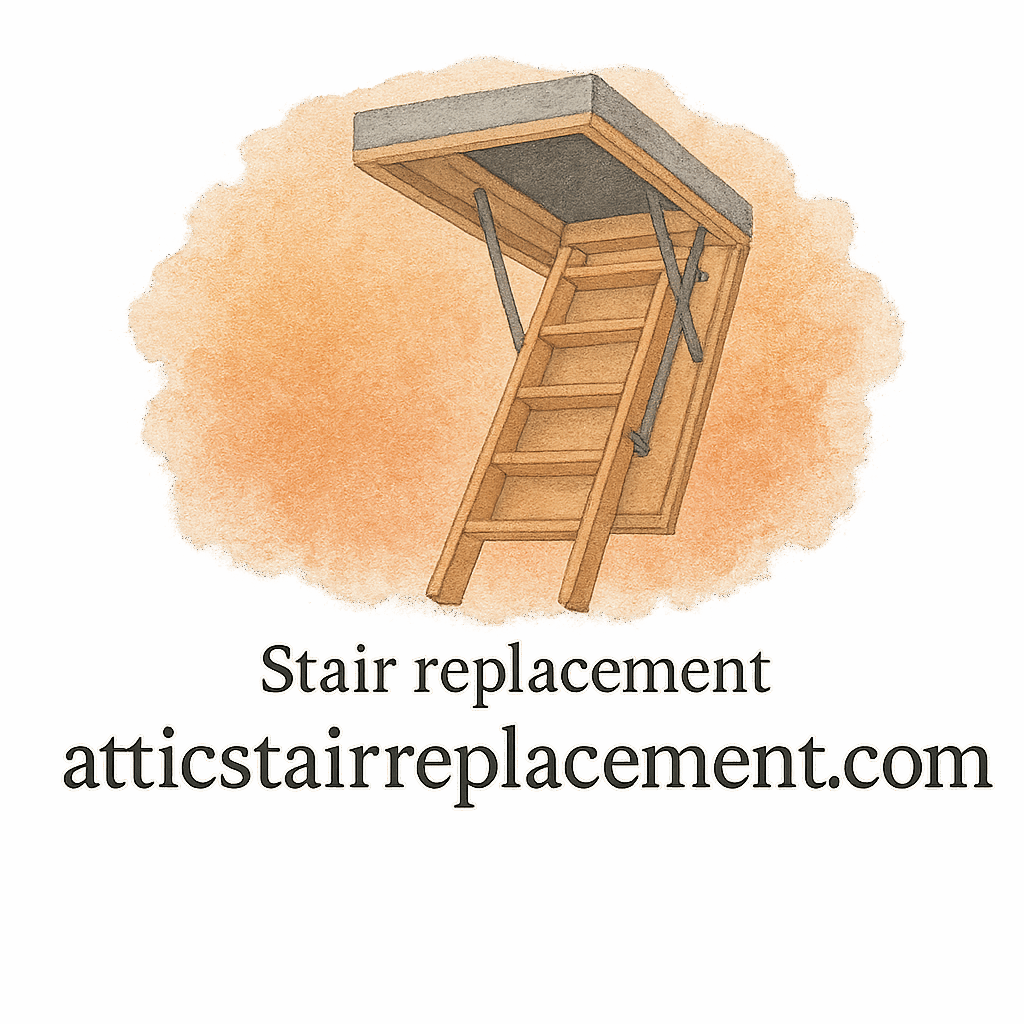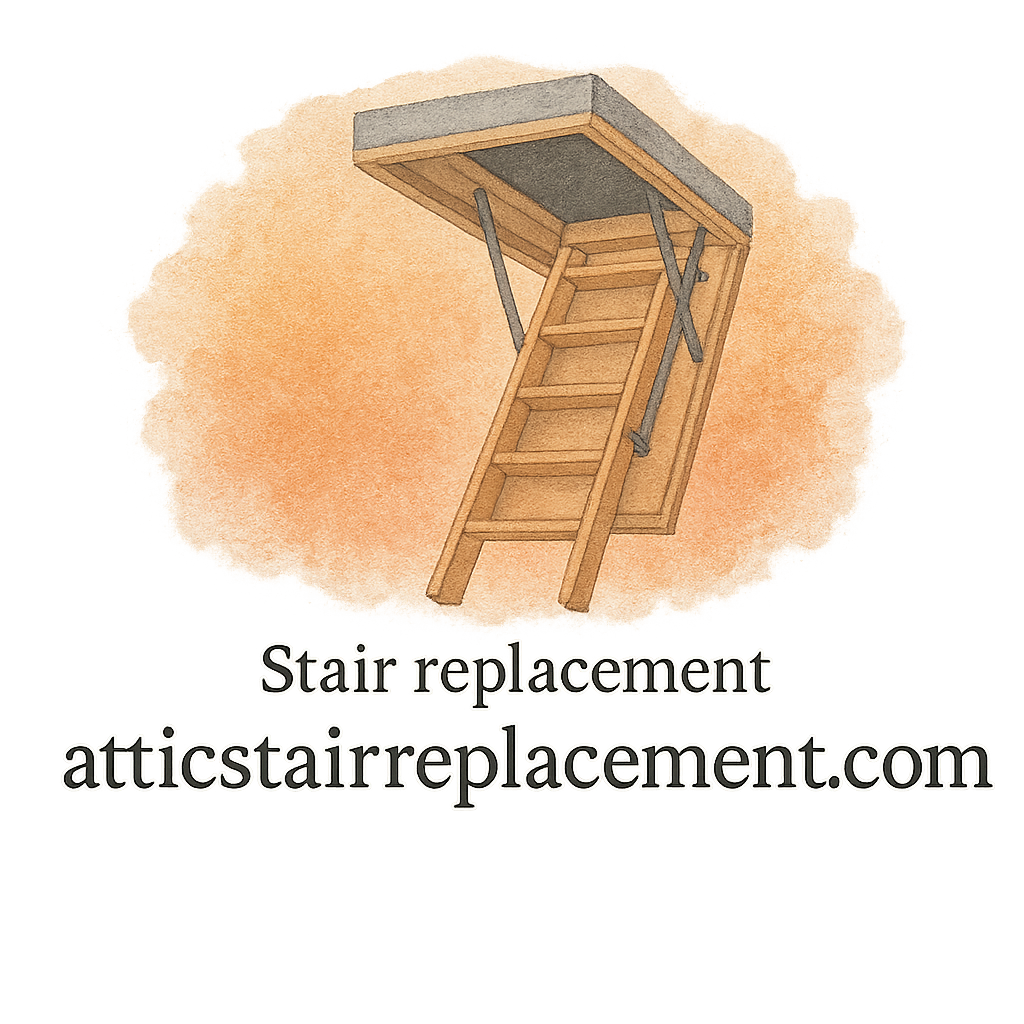Introduction
Thinking about upgrading your attic access but don’t want to break the bank? You’re in the right place. Attic stair replacement doesn’t have to be a pricey home improvement project. With the right choice of materials, you can have a safe, durable, and budget-friendly solution that fits your needs.
In this guide, we’ll explore five affordable materials for attic stair replacement and compare their pros, cons, and long-term value. Whether you’re tackling a DIY installation or hiring a contractor, these insights will help you make the smartest choice for your home.
Why Choosing the Right Material Matters
Safety and Durability First
Your attic stairs aren’t just about convenience—they’re about safety. The wrong material could lead to weak steps, slippery surfaces, or even structural failure. Choosing durable yet affordable materials ensures your stairs can handle regular use without compromising safety.
Cost vs. Longevity
Sometimes, going cheap upfront ends up costing more later. The right balance between affordability and durability can save you from frequent replacements and repairs. That’s why weighing each material’s lifespan is just as important as its price tag.
Factors to Consider Before Selecting Attic Stair Materials
Before diving into our list, let’s cover what really matters when picking attic stair materials.
Weight Capacity
Consider how much weight the stairs can safely hold. Lightweight materials might be cheaper but may not handle heavy loads over time.
Ease of Installation
Some materials are easier for DIY projects, while others require a professional contractor. Knowing this can save you time, effort, and extra costs.
Maintenance Needs
Low-maintenance materials are better for busy homeowners. Ask yourself: Will the stairs need frequent adjustments, tightening, or repairs?
Affordable Material #1: Plywood Attic Stairs
Plywood is one of the most cost-effective materials for attic stairs, commonly used in budget-friendly installations.
Pros of Plywood
- Very affordable and widely available
- Lightweight, making installation easier for DIYers
- Can be painted or sealed for extra protection
Cons of Plywood
- Less durable compared to hardwood or metal
- Susceptible to warping and moisture damage
- Limited lifespan with heavy use
If you’re looking for a quick, budget-friendly attic stair replacement, plywood is a practical choice.
Affordable Material #2: Aluminum Attic Stairs
Aluminum is a popular option because it balances affordability with durability.
Pros of Aluminum
- Lightweight yet strong
- Rust-resistant, making it ideal for humid climates
- Easy to maneuver during installation
- Long-lasting with minimal maintenance
Cons of Aluminum
- Can bend under excessive weight
- Slightly more expensive than plywood or MDF
- Not as sturdy as steel
Aluminum attic stairs are a great pick for homeowners who want durable and low-maintenance stairs without overspending.
Affordable Material #3: Steel Attic Stairs
If you want toughness on a budget, steel is worth considering.
Pros of Steel
- Extremely durable and heavy-duty
- Can support high weight capacity
- Resistant to everyday wear and tear
- Long lifespan if maintained properly
Cons of Steel
- Heavier, making DIY installation harder
- Prone to rust if not coated or maintained
- Can be noisy when opened and closed
Steel attic stairs are best suited for homes that require heavy-duty, long-lasting solutions.

Affordable Material #4: MDF (Medium Density Fiberboard) Attic Stairs
MDF offers an inexpensive wood-based option for attic stairs.
Pros of MDF
- Very affordable compared to hardwood
- Smooth surface, easy to paint
- Eco-friendly option made from recycled fibers
Cons of MDF
- Not as durable as plywood or solid wood
- Highly sensitive to moisture—can swell or warp
- Shorter lifespan with frequent use
MDF is perfect for occasional-use attic stairs where cost savings matter most.
Affordable Material #5: Hybrid Designs (Wood + Metal)
Hybrid attic stairs combine materials (usually wood steps with metal frames) for the best of both worlds.
Pros of Hybrid Attic Stairs
- Balance of affordability and strength
- More stylish than all-metal designs
- Durable, with better weight support than pure wood
Cons of Hybrid Attic Stairs
- Slightly pricier than single-material stairs
- Can be heavier to install
- Requires careful maintenance of both wood and metal parts
For homeowners who want strength, style, and affordability, hybrid designs are an excellent choice.
Comparing the 5 Materials Side by Side
| Material | Affordability | Durability | Maintenance | Best For |
|---|---|---|---|---|
| Plywood | ⭐⭐⭐⭐ | ⭐⭐ | Medium | Budget DIY projects |
| Aluminum | ⭐⭐⭐ | ⭐⭐⭐⭐ | Low | Long-term durability |
| Steel | ⭐⭐ | ⭐⭐⭐⭐⭐ | Medium | Heavy-duty use |
| MDF | ⭐⭐⭐⭐⭐ | ⭐⭐ | High | Occasional use |
| Hybrid | ⭐⭐⭐ | ⭐⭐⭐⭐ | Medium | Balanced needs |
DIY vs. Hiring a Contractor for Installation
When DIY Makes Sense
If you choose lightweight materials like plywood or aluminum, DIY installation is usually manageable. Many homeowners save money by following a step-by-step guide like the ones available at DIY Installation.
When to Call a Contractor
If you’re dealing with steel or hybrid designs, hiring a professional contractor ensures proper installation and long-term safety. You can check expert tips at Expert Advice.
Tips to Extend the Lifespan of Your Attic Stairs
Regular Maintenance
Check bolts, hinges, and steps every few months. Preventative care helps avoid sudden failures. More advice can be found at Maintenance & Repair.
Spotting Early Signs of Wear
Look for cracks, rust, or wobbling. Fixing small issues early prevents costly replacements.
Common Mistakes to Avoid When Replacing Attic Stairs
- Choosing the cheapest option without considering durability
- Ignoring weight capacity limits
- Skipping proper sealing against moisture
- Attempting complex installations without the right tools
Avoiding these mistakes can save you from wasted money and unsafe setups.
Final Thoughts
Attic stair replacement doesn’t have to drain your wallet. From budget-friendly plywood to long-lasting steel and balanced hybrid designs, there’s a material for every home and budget. The key is finding the right balance of cost, durability, and maintenance needs.
By making an informed choice and following proper installation and maintenance, your attic stairs can remain safe, strong, and reliable for years to come.
For more guides, tips, and expert insights, explore Attic Stair Replacement.
FAQs
1. What is the most affordable material for attic stair replacement?
MDF is usually the cheapest, but plywood is a better budget option for durability.
2. Which material lasts the longest?
Steel attic stairs generally last the longest, especially when maintained properly.
3. Can I install attic stairs by myself?
Yes, lightweight materials like plywood and aluminum are DIY-friendly. For steel, hiring a contractor is safer.
4. How do I maintain aluminum attic stairs?
Keep them clean, lubricate moving parts, and check hinges periodically.
5. Are hybrid attic stairs worth it?
Yes, they combine the strength of metal with the warmth of wood, making them a durable yet affordable choice.
6. What’s the biggest mistake homeowners make with attic stairs?
Going for the cheapest option without considering safety and weight capacity.
7. How can I prevent attic stairs from wearing out quickly?
Regular maintenance, sealing against moisture, and not exceeding the weight limit will extend their lifespan.


